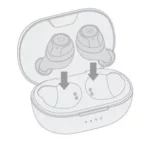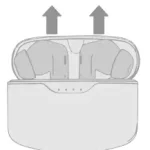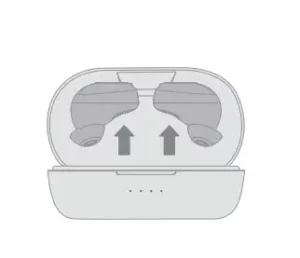
 TRUE WIRELESS
TRUE WIRELESS
STEREO EARPHONES
Customer Support
[email protected] (US/CA)
[email protected] (UK)
[email protected](DE)
[email protected] (ES)
[email protected] (FR)
[email protected] (IT)
We will reply to you within 24 hours and 100% solve your issues
Packaging List
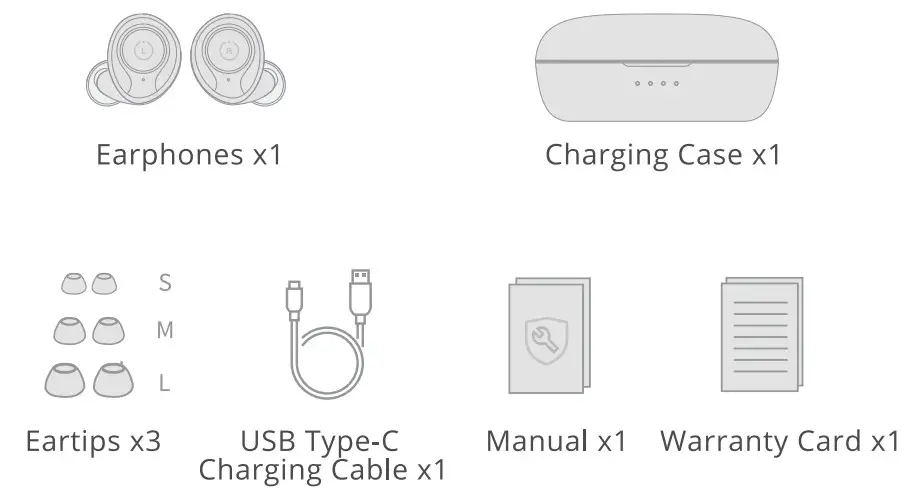
Product Overview
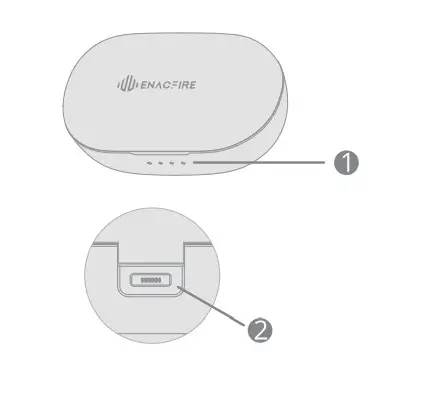 |
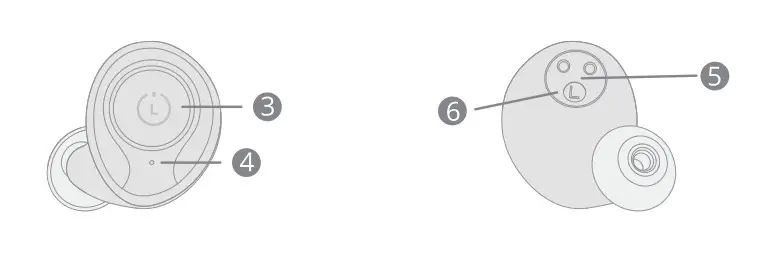 |
- Charging Case LED Light
- Charging Port
- Multifunctional Button
- Earphone LED
- Magnetic Charging Pin
- L/R Logo
Power On and Pairing
Approach1 – With Charging Case
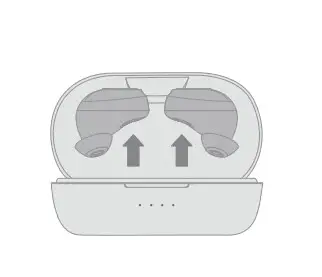 |
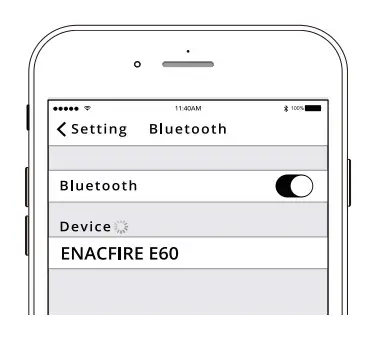 |
Take out earphones from the charging case
Select ‘ENACFIRE E60’ from the Bluetooth list
Approach 2-Without Charging Case
Power On: Touch the earphones for 2 seconds Prompt sound ‘Power on’
Pairing: Right earphone Blue and White light flash
Select ‘ENACFIRE E60’
Note: Right earphone is the master earphone
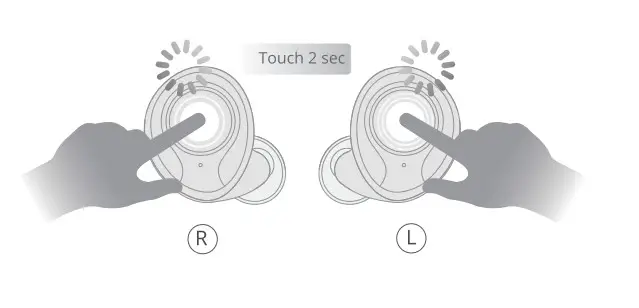
Incoming call
Answer call/End call
Tap the Left / Right earphone once
Music
Pause / Play
Tap the Left / Right earphone once
Power Off
Mode 2-Without Charging Case
Turn off Bluetooth to disconnect the earphones Touch either one earphone for 8 seconds to power off both earphones
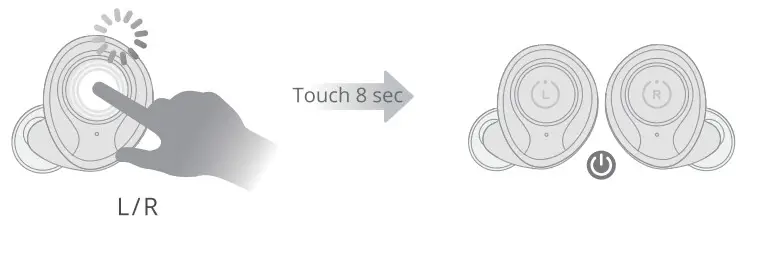
Single Mode
| Single Mode | Earphone |
| Without Charging Case | US: Turn off both earphones Touch the Left / Right earphone for 4 seconds enter pairing mode. Select ‘ENACFIRE E60’ from the Bluetooth list |
Game Mode
Game Mode On Tap Left / Right earphones 4 times with prompt sound: Game mode
Game Mode Off Tap Left / Right earphones 4 times with prompt sound: Game off
Charging
Earphones:
Earphones white LED Light on/off: Charging/Fully Charged
Charging Case:
Lights on the charging case stand for the remaining battery capacity
Note: It takes about 1.5-2 hours to fully charge the charging case
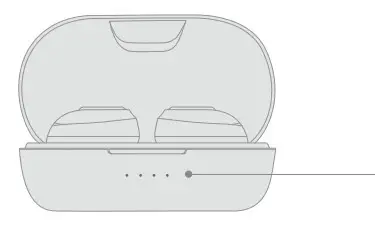
 |
1/4 Battery Left |
| 2/4 Battery Left | |
| 3/4 Battery Left | |
| Fully charged |
Safety Instruction
Using earphones at high to moderate volumes for extended periods of time will result in permanent hearing damage. It is advised that you keep volume levels moderate to low at all times for your safety. Do not use them while driving, cycling, operating machinery, or performing other activities that require hearing surrounding sounds. Do not use earphones in thunderstorm weather, the earphones may not work properly in bad weather conditions, and may increase the risk of being hit by lightning.
Earphones may not work properly under high temperature or high humidity conditions.
Do not use any corrosive cleaner/oil to clean the earphones. If the earphones come in contact with liquids, quickly wipe them away. If submerged in the water, do not turn the earphones on until it is completely dried.
Tips: Man-made damage and loss are not covered under warranty.
Keep the earphones and the packaging out of reach of children.
FCC Statement
This equipment has been tested and found to comply with the limits for a Class B digital device, pursuant to part 15 of the FCC Rules.
These limits are designed to provide reasonable protection against harmful interference in a residential installation.
This equipment generates, uses, and can radiate radio frequency energy and, if not installed and used in accordance with the instructions, may cause harmful interference to radio communications.
However, there is no guarantee that interference will not occur in a particular installation. If this equipment does cause harmful interference to radio or television reception, which can be determined by turning the equipment off and on, the user is encouraged to try to correct the interference by one or more of the following measures:
- Reorient or relocate the receiving antenna.
- Increase the separation between the equipment and receiver.
- Connect the equipment into an outlet on a circuit different from that to which the receiver is connected.
- Consult the dealer or an experienced radio/TV technician for help.
This device complies with part 15 of the FCC Rules. Operation is subject to the following two conditions:
- This device may not cause harmful interference
- this device must accept any interference received, including interference that may cause undesired operation
Changes or modifications not expressly approved by the party responsible for compliance could void the user’s authority to operate the equipment.

